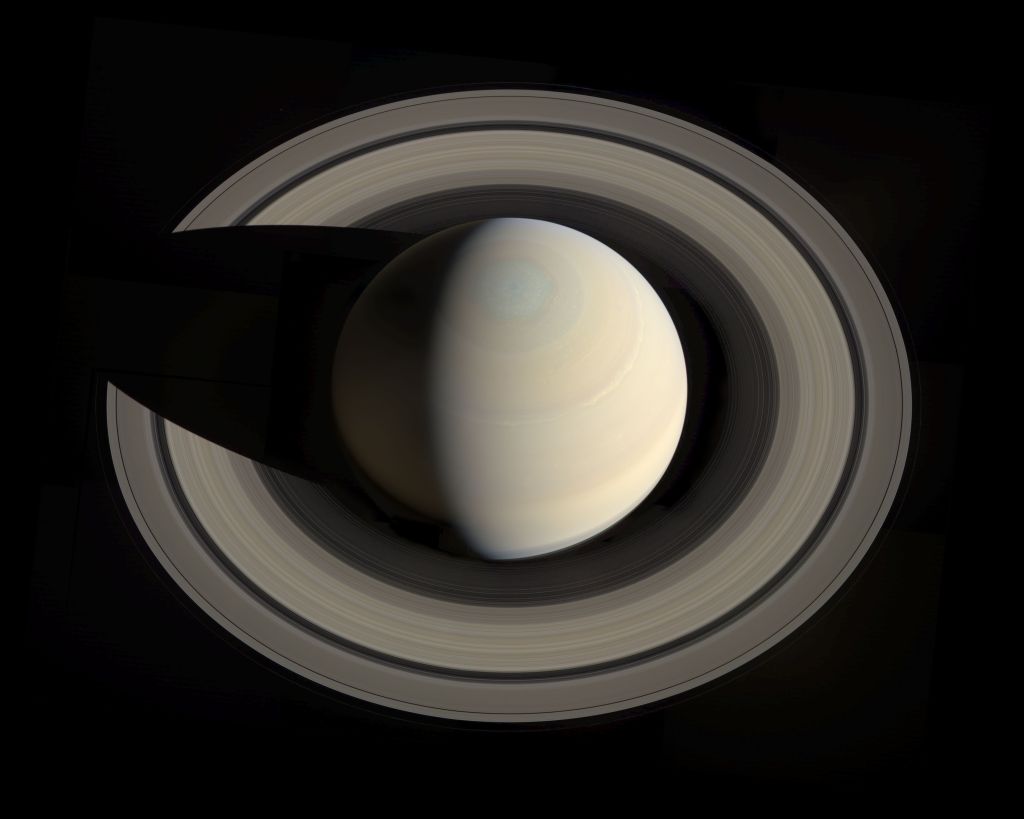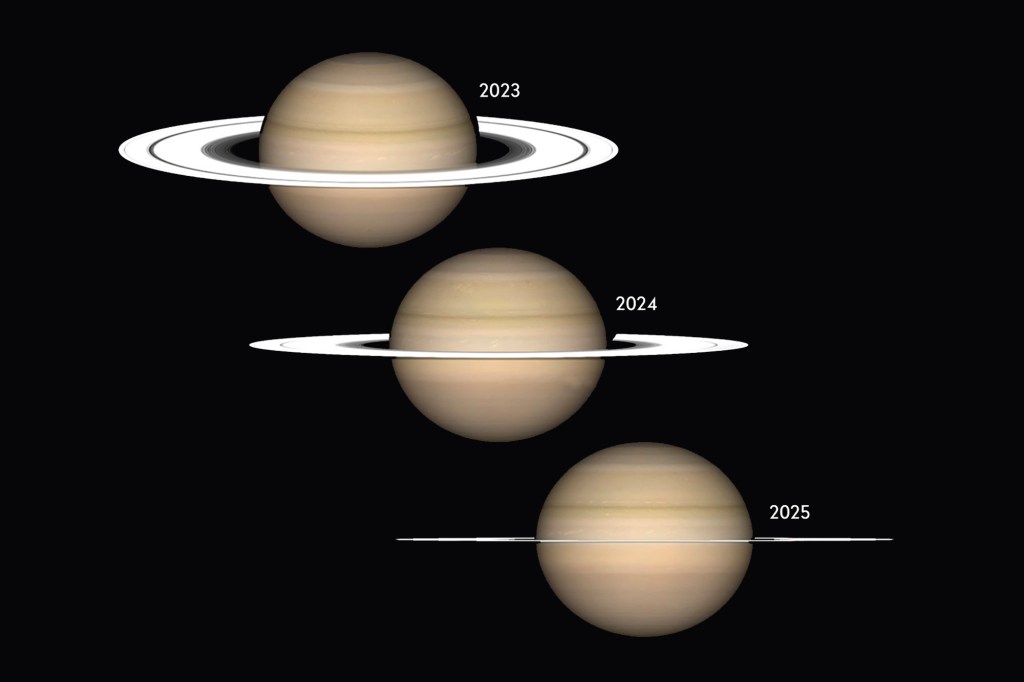We reached a turning point Saturday.
Catch Saturn’s rings while you can: The gas giant’s celestial hula rings will disappear within six months – but thankfully it’s just an orbital illusion.
In March 2025, these celestial circles – which stretch from 43,500 to 87,000 miles, or the equivalent of 30 Earths – will become invisible from Earth’s perspective.

This temporary disappearance is due to Saturn’s tilt on its orbital axis, which will position the rings in a perfectly horizontal plane in our vantage point, reports Earth.com.
They will be in a zero English; the rings are currently located at a barely visible 3.7 degrees.
To that point, these streaks of cosmic dust will be similar to seeing the edge of a piece of paper “when it is positioned at the far end of a football field,” according to the space station.
How can such gigantic rings simply disappear from view?
Despite the infinity of the rings, they are as thin as 300 feet in most places, which is invisible when viewed 746 million miles away on Earth.

Thankfully, this disappearance is not permanent, but instead occurs every 29.5 years – the period it takes the planet to orbit the Sun.
Saturn’s clusters will make a return tour after March 2025, before disappearing again in November 2025.
The planet has seven distinct rings composed of ice, rocky debris and dust.
These are believed to be the remains of comets, asteroids and moons that were destroyed by the powerful gravitational pull of the planet.
Unfortunately, these intergalactic bracelets may soon disappear for good, and not just because of Saturn’s rotation angle.
Scientists claim that the rings of rock could disappear in as little as 300 million years because they are “being drawn to Saturn by gravity as a dusty shower of ice particles under the influence of Saturn’s magnetic field, according to NASA.
This is an error on interstellar time scales that the solar system has existed for billions of years and is expected to be around for billions more.
“The big takeaway is that ring systems are transient features,” James O’Donoghue, a postdoctoral fellow at NASA’s Goddard Space Flight Center and lead author of the study, said in 2018. “They’re just not built to last.”
#Saturns #iconic #rings #disappear #months #heres
Image Source : nypost.com